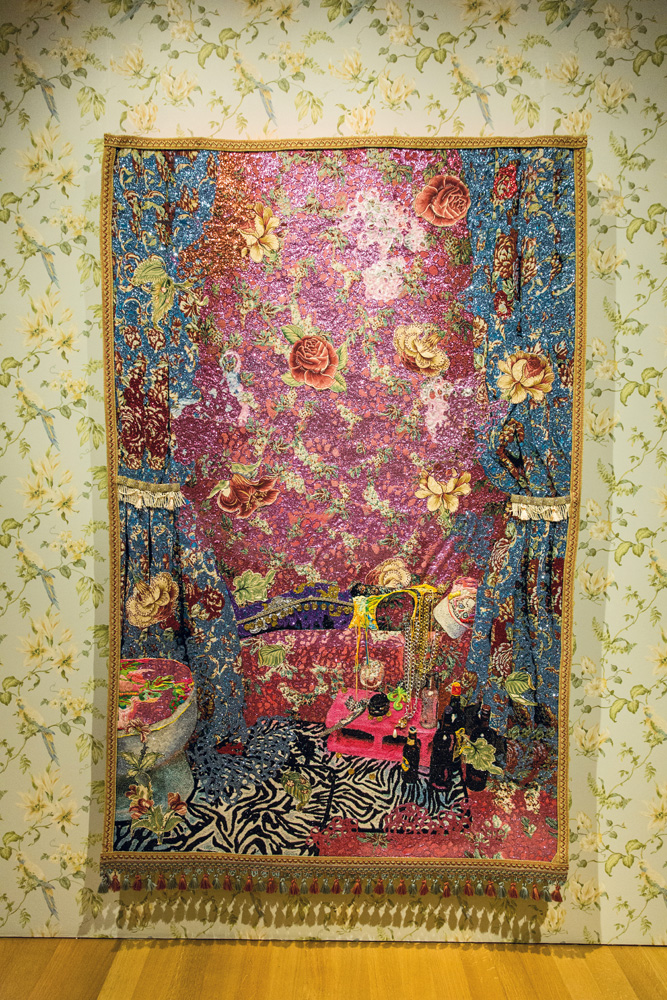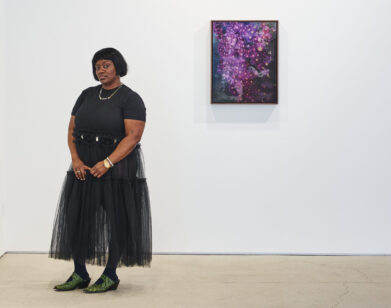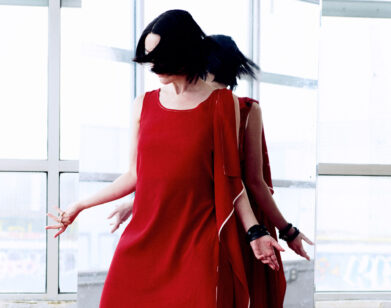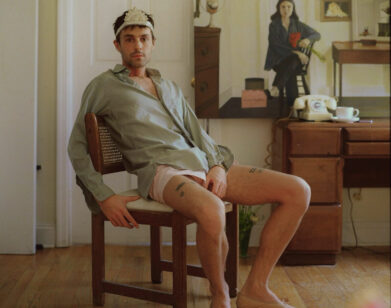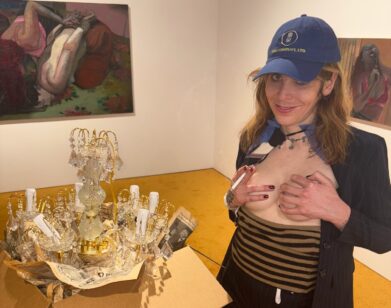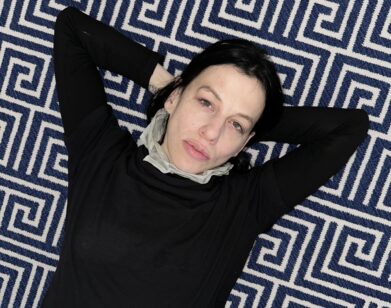Ebony G. Patterson
“How do you know when a work becomes too much materially? When is the last embellishment? People always ask me that,” says Ebony G. Patterson, a 34-year-old artist from Kingston, Jamaica, whose work is influenced by the bravado of dancehall culture. Patterson’s high-camp sensibility—her installations of sculpture, tapestries, and large-scale photo manipulations are dripping in beading, brocade, décollage, rhinestones, glitter, lace, and children’s toys—addresses issues of black visibility and authority in contemporary culture. “One cannot not notice the person who is wearing three or four chains and a loud outfit and fancy shoes. There is a sense of authority in claiming visibility in a space that has deemed you unworthy of visibility,” she says. “Like gold in illuminated manuscripts, bling creates the opportunity for illumination; it creates a moment of light.”
This month, Patterson opens her solo show “…when they grow up…” in New York at the Studio Museum in Harlem. The work focuses on black children, with allusions to the political and racial conversations around black youth being engaged by the police. “Like the 12-year-old boy playing with a toy gun in public space, and the social phobia of these youth,” she explains. “One cannot help but think about the current climate, the presence of violence happening to our children. Black children are denied a sense of innocence and are seen as guilty because of their blackness.” In keeping with her overload aesthetic, the multimedia installation in the museum’s project space will feature more than 200 embellished fabric balloons and several large-scale works on paper depicting children, focusing on “the idea of the mass and forcing a moment of confrontation.” “If I’m using an image of a 4-year-old kid, there’s the cute factor—it could be dismissed as too sweet,” Patterson says. “But creating really big pictures pulls the viewer in through scale and the treatment of surface.” The show tackles cultural “ephebiphobia,” or the fear of youth, and a seeming desire for black children to be invisible. Patterson hopes to unwork that logic, attempting, as she says, “to represent black children as just children, with the same sense of curiosity, play, books, games as white children; the same kind of intrigue is there, but then explore why the audience might perceive this as a threat.”
Alongside the Studio Museum show, Patterson’s “Dead Treez,” a show that uses the seductive beauty of commodity culture to focus attention on crime victims, is currently on view at New York’s Museum of Arts and Design. After that, she starts work on a project for the São Paulo Bienal. When I ask about her incredibly busy schedule, she laughs. “It’s kind of bananas!”

